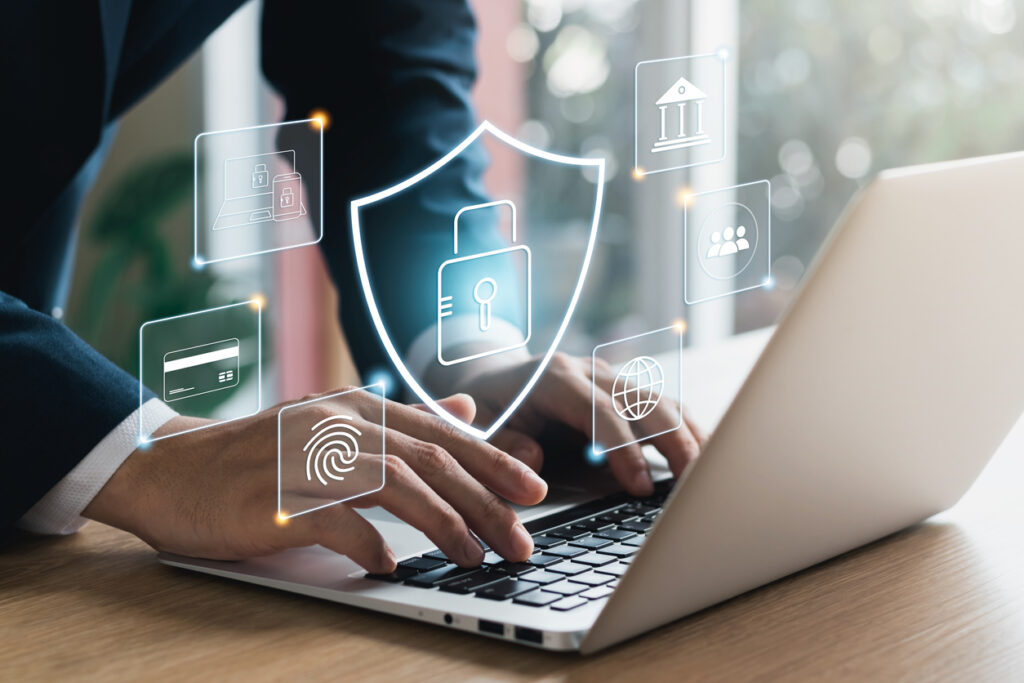Modern IT asset management (ITAM) goes far beyond the traditional management of IT assets. It plays a particularly important role in protecting companies against cyber risks. Suitable software helps your team to keep an eye on all devices at all times and detect potential threats at an early stage.
What is IT asset management (ITAM)?
ITAM, also known as IT asset lifecycle management or asset lifecycle management, refers to the proactive and strategic management of IT assets. This includes the acquisition, use, automation, maintenance and disposal of assets. Gartner’s definition shows just how important ITAM is from a strategic point of view: it captures the lifecycle costs and risks of IT assets in order to maximize the business benefits of strategic, technological, financial, contractual and licensing decisions.
The most important sub-areas include:
- Hardware asset management: managing devices such as laptops, servers and peripherals
- Software asset management: managing the planning, acquisition, use, maintenance and removal of software
- Licensing and compliance: Ensuring the licensing of hardware and software and compliance with company guidelines
What is an IT asset?
The prerequisite for seamless ITAM is the consideration of all IT assets. This includes mobile and permanently installed hardware inside and outside the network (such as laptops, routers, servers, peripherals, smart TVs), software (such as cloud services, security tools, licenses), users and business-relevant information.

The 5 phases of classic ITAM
Classic ITAM consists of five successive phases that can be largely automated. Once the basic framework is in place, you can optimize the individual phases one by one.
- Requirement
The first phase begins with the request for new IT equipment within the company. An effective ITAM has a best practice for standardized, automated transmission and predefined criteria for checking, approving or rejecting requests.
- Procurement
The next phase involves the procurement of IT assets. Tasks include the selection of one or more providers, contract negotiations, financing and adding the new assets to the company’s inventory.
- Implementation
The implementation phase begins with the preparation of the purchased devices for use at the respective location. They are integrated into the IT landscape using pre-installed software, settings, firewall rules, VPN access and policies. Special tools for IT inventory management, device assignments and defined owners and locations ensure greater transparency and control during implementation.
4. Maintenance
Asset maintenance includes routine measures for physical maintenance and software updates, as well as necessary repairs. Sophisticated ITAM systems work with automated processes that are supported by management tools.
5. Decommissioning
Whether outdated or no longer functional: At the end of their lifecycle, IT assets need to be decommissioned. You should carefully weigh up the costs of refurbishing and recycling older assets or disposing of them and replacing them with newer solutions. Responsible and sustainable action is required here.
The importance of ITAM for cybersecurity
Cloud computing, mobile working and the introduction of SaaS platforms mean new challenges for the recording and management of hardware and software assets. A good ITAM provides a better overview and transparency, which also pays off for cybersecurity: Your team can carry out upgrades to the latest technologies more quickly and automatically. You also have a better overview of the entire IT environment and can make data-based decisions about security and data protection solutions.
A complete IT inventory is therefore the basis for a solid security concept and the fulfillment of compliance requirements. And this is where cybersecurity asset management comes into play.
What is the difference between ITAM and cybersecurity asset management?
While ITAM aims to optimize business expenditure and efficiency, cybersecurity asset management is primarily concerned with strengthening important security functions. In terms of vulnerability management, this includes detecting and responding to threats and checking all assets for potential vulnerabilities. Another important function is cloud security: all cloud instances should be configured according to the principle of least privilege and only be accessible with absolutely necessary access rights. Should problems occur, you can achieve a rapid incident response thanks to enriched, correlated data across all assets. In addition, cybersecurity asset management enables the early detection and supplementation of missing security controls through continuous monitoring.
Cybersecurity asset management requires deeper insight
In the past, ITAM and cybersecurity asset management was based on configuration management databases. However, with the proliferation of cloud computing and virtual machines, the complexity of digital landscapes is increasing – and CMDBs often lack the necessary data to fully view and understand all cybersecurity assets. They need IT inventories with comprehensive, correlated data on every single asset – from software (licenses), computers and peripherals to cloud, virtual and IoT devices. Specialized cybersecurity asset management solutions cover exactly that and pick up where ITAM leaves off.
The benefits of close cooperation between ITAM and cybersecurity asset management
As the world of work becomes more flexible, the number of operational technology and Internet of Things devices is also increasing – many of which are unmanaged. For comprehensive, secure and reliable asset management, ITAM and cybersecurity asset management need to work closely together.
The benefits are the following:
- Greater transparency: visibility of all assets with context in every environment
- Single source of truth: consolidated and unified source of information with correlated data
- Enhanced endpoint security: comprehensive integration into existing systems
- Simple processes: agentless and automated ITAM inventory in real time
- Increased cybersecurity: easy compliance with regulations
- Cybersecurity policy: automated compliance with security guidelines
- Whichever solution you choose: It should be able to recognize and classify all managed, unmanaged and IoT devices, whether wired or Wi-Fi, inside or outside the network.
Assets do not stand still – so they are a target that is constantly moving. To enable your team to identify and manage all devices, applications and users in real time, you need seamless processes with full transparency and control. Only with broad coverage of all asset types you can maximize the ROI of your technology investment and reliably protect your business.
